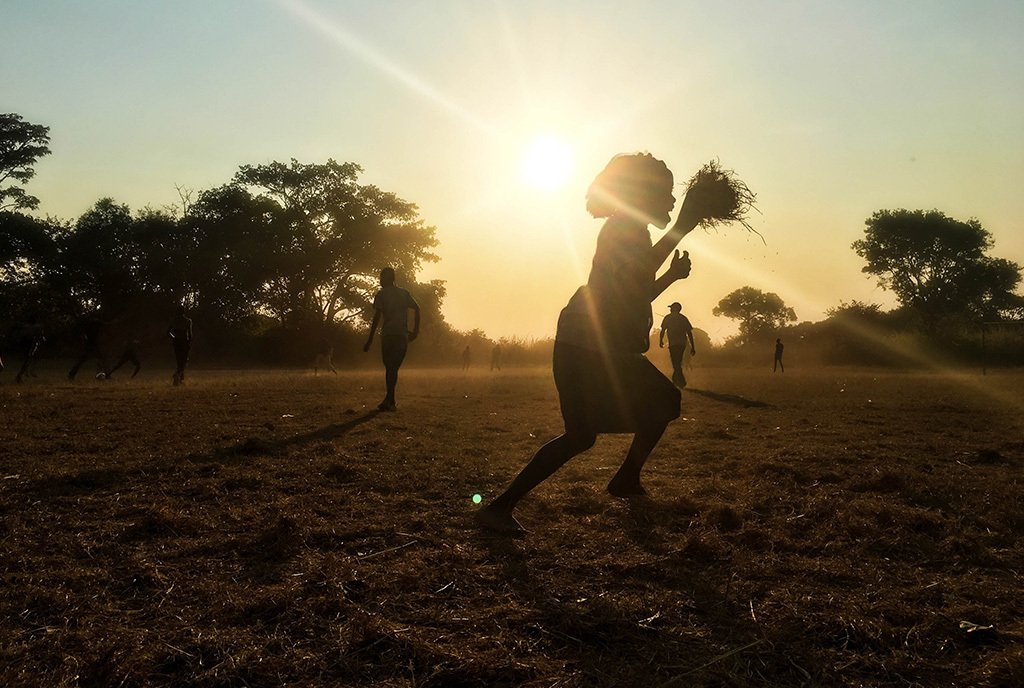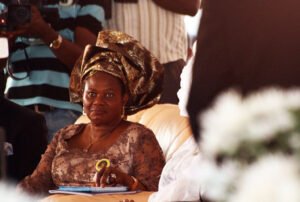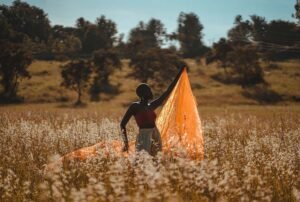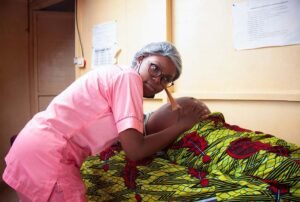
Since time immemorial, Indigenous people and the natural world have had a reciprocal relationship. Many Indigenous communities hold a cultural value of safeguarding the natural environment, and in return these resources nourish and nurture them. But climate change is altering this balance.
Droughts, floods, wildfires, and infestations due to climate change are disrupting ecosystems, resulting in devastating impacts on the Indigenous communities in especially vulnerable regions in the United States and across the globe.
Indigenous communities with deep regional knowledge can help stave off the worst effects of climate change and restore [Africa’s] threatened food future.
While these events are alarming, they do hold one positive outcome: they are accelerating region-specific climate research, such as fire management, flood control, and weather forecasting. Some efforts are turning to Indigenous knowledge to develop climate solutions that preserve both regional culture and climate.
As Indigenous knowledge is bolstering climate solutions in the United States, researchers are also striving to document African Indigenous knowledge for its intrinsic cultural value and practicality in supporting climate resilience. The African continent has recently experienced severe climate disasters, including floods from heavy rainfall, severe drought exacerbating food insecurity, wildfires, and drying rivers.
Indigenous communities with deep regional knowledge can help stave off the worst effects of climate change and restore the continent’s threatened food future. However, tapping into this knowledge is often hindered by language barriers and other aspects of localization, exacerbated by the Eurocentrism of the scientific field.
Current approaches to these issues in Africa, both in communicating effectively with local and Indigenous communities and in addressing the constraints of modern science, are highlighting important ways to broaden the scope of climate research and mitigation.
Local Knowledge in Practice
Dr. Rhoda Kachali is one researcher who has experienced localization and cultural limitations during her research. Her work with the Zambian Department of National Parks aimed to use Indigenous knowledge of fire and burning to help communities reduce the impact of fires in their region.
Wildfires in Zambia have surged significantly in recent years. From August 2022 to August 2023, Global Forest Watch received 102,238 fire alerts in Zambia. The organization noted that the fire alerts were “unusually high” compared to previous fires since 2012. Zambian fire management organizations like the World Wildlife Fund Zambia (WWF) and the Department of National Parks sought Indigenous and local approaches to wildfires, including planting native pyrophytes (fire-tolerant plants) and fighting fire with fire.
Many African communities have long relied on these perspectives—also known as Indigenous and Local Knowledge (ILK)—to anticipate or respond to the changing climate. It is a type of knowledge acquired from the first-hand experiences of local people. For example, in earlier times, this knowledge served as a reliable early-warning system and predictor of the quality and intensity of a farming season and still serves Indigenous communities today. Using these systems, farmers and communities could decipher if they needed to increase water management efforts or prepare for a drought season.
“We did a study in Lusaka, Zambia, and locals said that they trusted their Indigenous climate knowledge more than forecasts from radio stations,” says Dr. Bridget Bwalya, a senior lecturer, ecologist, and sustainable agriculture researcher. “They told me the data from radio forecasts were too generic and weren’t local enough, so they relied on their Indigenous knowledge.”
For local and Indigenous knowledge to be widely adopted at national and global levels, a great deal of Indigenous expertise still needs to be articulated for the broader scientific and policy communities.
Sign up for our free newsletters
Subscribe to NPQ's newsletters to have our top stories delivered directly to your inbox.
By signing up, you agree to our privacy policy and terms of use, and to receive messages from NPQ and our partners.
For example, wind flow patterns can be foreseen by high fruiting levels of wild trees. Zambian locals can anticipate heavy rainy seasons if winter is extremely cold. An influx of caterpillars and moths predicts a drought. In Kenya, when coffee trees flower, it indicates that the rainy season is near. In Botswana, South Africa, Tanzania, and Zimbabwe, the blossoming of peach trees means the same.
Africa’s wealth of Indigenous knowledge about farming, agroforestry, and environmental preservation techniques has protected many Indigenous regions for centuries. Much of it is embedded in the continent’s diverse local languages and cultures and can potentially revolutionize modern science.
Lost in Translation
As the quest to amplify Indigenous environmental knowledge strengthens, researchers are also highlighting cultural rifts and language barriers between Indigenous people and climate scientists.
For local and Indigenous knowledge to be widely adopted at national and global levels, a great deal of Indigenous expertise still needs to be articulated for the broader scientific and policy communities involved in climate adaptation and mitigation planning. However, the embedded Eurocentrism of modern science is hindering the study of ILK’s potential global relevance.
Even after millennia of local scientific endeavors on the continent—like the Nabta Playa of the Egyptians, an ancient stone circle created to measure astronomical events regarding seasonal change—many Indigenous communities do not know what the word “science” translates to in their language. The language rift shows how modern science exists as an English language-based pursuit and reinforces the idea that scientific innovations are largely accomplished by others.
Christopher Chetsanga, a Zimbabwean scientist and professor, developed a scientific dictionary in the Shona language, spoken by nine million people in Zimbabwe.
Sometimes, cultural differences are also a limitation researchers face while working on projects in local regions. “It’s not always about verbal language but cultural language barriers too,” South African-based agricultural researcher Sonia Mountford says. “Just last week, I hosted a webinar on poultry and felt frustrated because it felt like I was not speaking to the audience in ‘their language’.” Though her words were decipherable, participants did not understand the content because her method of teaching didn’t align with their cultural ways of sharing information.
Dr. Bwalya echoes how seemingly small cultural disconnects can have real impacts on the research process. “A colleague made the mistake of hugging the locals and they were uncomfortable with it. They didn’t contribute to the discussion afterward.”
Indigenous Science Solutions
As researchers and innovators experience these language and culture barriers, solutions are springing up to mitigate their impact on climate research.
Christopher Chetsanga, a Zimbabwean scientist and professor, developed a scientific dictionary in the Shona language, spoken by nine million people in Zimbabwe. His project, Duramazwi resainzi nehumhizha reChirungu neChishona, was created over 10 years ago to improve local understanding of scientific terms and issues in his region.
Localazy, a translation company, recently built a climate-focused translation project, Shared Climate Strings. The project utilizes the strength of the open-source community to make research easier for climate researchers. “We believe that building a solid base of locals who know their language can significantly impact climate research efforts in Africa,” says Jakub Dubec, founder of Localazy.
With more projects like these taking shape, cross-cultural and knowledge exchange between Indigenous communities and researchers is beginning to advance solutions by decentering a Eurocentric approach to science. More investment in these efforts and the sensitization of the importance of African science are necessary, as local and Indigenous farming, agroforestry, and environmental preservation techniques are critical keys to unlocking the full potential of climate change adaptation and mitigation.













